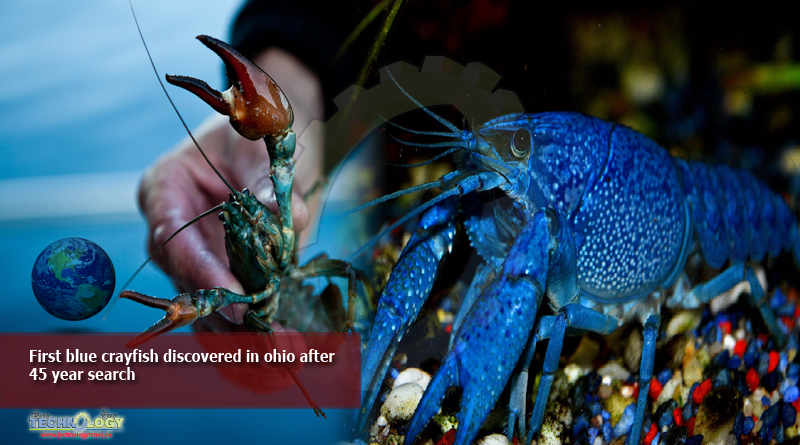Crayfish : A newly discovered crustacean in ohio is putting the “cray” in crayfish as it was found following a 45-year hunt and, best of all, it’s blue.

The funky little crustacean is the first blue crayfish (cambarus monongalensis) discovered in the region, with other populations and related species existing in west virginia, pennsylvania, maryland, kentucky, virginia, tennessee, and north carolina.
It had long been believed that the ohio river would be a barrier to the dispersal of the blue crayfish, but that didn’t stop ohio researchers collecting crayfish in search of the elusive blue species since 1975. It’s thought the small population found in monroe county, ohio, crossed into the area prior to continental glaciation and the formation of the ohio river around 2 million years ago.
The elusive crayfish were finally tracked down on may 19, 2020, as part of an expedition led by laura s. Hughes who had spent several years searching for the species as part of a citizen science project.
“a species of colorful crayfish has just been discovered living in eastern ohio,” wrote the ohio division of wildlife in a facebook post. “ohio researchers have been collecting crayfish in eastern ohio searching for the blue crayfish (a.k.a. blue crawfish, cambarus monongalensis) since 1975. On may 19th, an expedition led by laura s. Hughes found a small population of the species in monroe county, ohio. It is now ohio’s most colorful crayfish – and possibly its rarest!”
The researchers report that the blue crayfish had been hiding in hillside springs and seeps, making them difficult to find. Unfortunately, this puts them at a greater risk to changes in groundwater conditions. The team will now work to document the total range of the blue crayfish and determine its conservation status within ohio, but it is currently listed as being of least concern on the iucn red list.
This news was originally posted on iflscience.com
